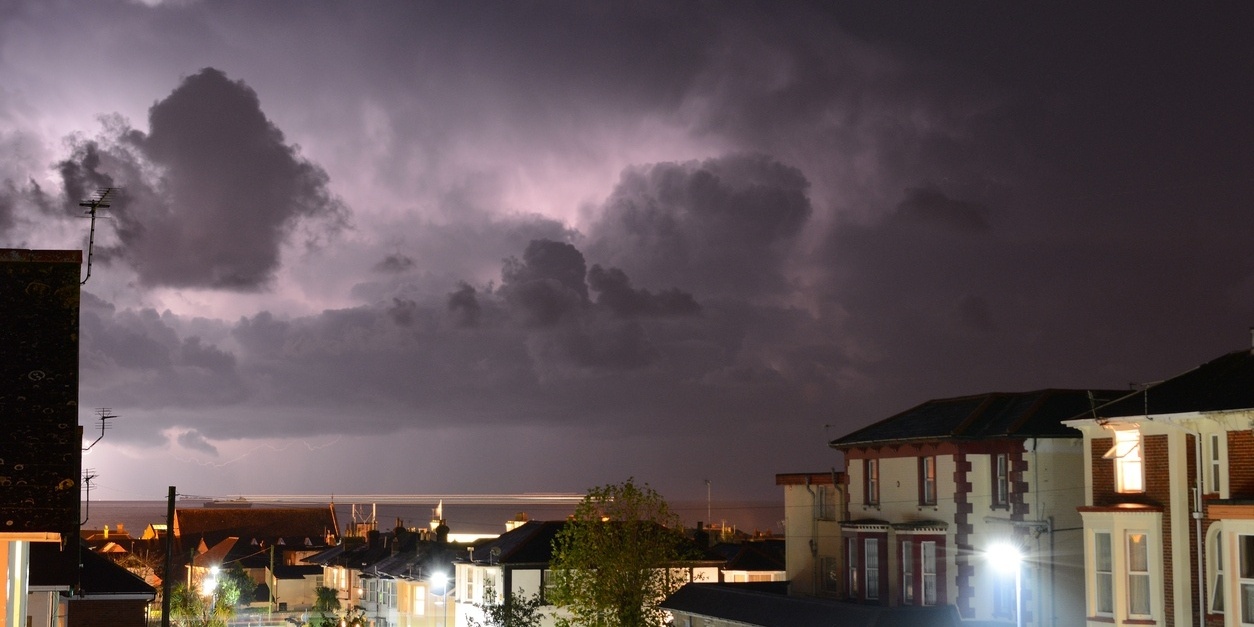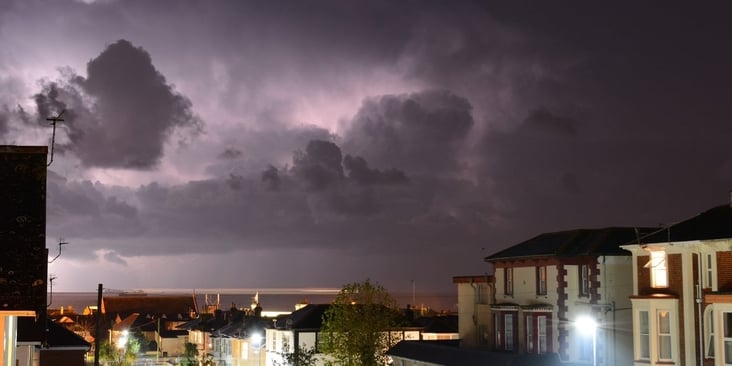Storm Season is Here: 7 Precautions You Can Take to Protect Your Commercial Roof

 You might not always think about your commercial roof, but it’s definitely something that should be on your mind, especially with storm season upon us. A roof is an investment, and it’s important to care for like an investment. When it comes to protecting your commercial roof during storm season, the best thing you can do is be proactive.
You might not always think about your commercial roof, but it’s definitely something that should be on your mind, especially with storm season upon us. A roof is an investment, and it’s important to care for like an investment. When it comes to protecting your commercial roof during storm season, the best thing you can do is be proactive.
By taking a proactive approach to your maintenance schedule, you’ll not only be better suited to make the necessary repairs if your roof is damaged during a storm, but you’ll minimize the damages, as well as the costs associated with a repair. It’s been found that by taking a proactive approach, facility managers and owners who conduct routine inspections and make routine repairs to their roofs spend an average of only 14 cents per square foot on an annual basis. Not only that, but their roof also tend to last an average of 21 years, compared to 13 years on the reactive side. Those who aren’t proactive and only react to problems as they occur could spend 25 cents per square foot annually for maintenance.
As part of your maintenance program, inspect your roof at least twice a year. Making the necessary repairs as you go will serve you best in the long run. Here are some tips you can add to your toolbox so you can prepare your business for storm season:
- Look for ways to minimize wind damage by checking for loose shingles, tiles or materials. Leaves and other materials on your roof can hold moisture, putting your roof in jeopardy by speeding up the deterioration of roofing materials.
- Clean the drainage system. Leaves, twigs, and small branches are common materials that can backup your drainage system. This can be costly. If your system doesn’t drain properly the water will backup and linger on your roof, as opposed to draining off. Once again, this is why regular maintenance is crucial.
- Use plywood to cover your windows, skylights or glass. This is an important step in protecting your property. Not only do you want to cover these accessories, but you should also be sure to check their seals as part of your ongoing maintenance program.
- Tie down items that can become airborne, like air conditioners, patio furniture from a pool deck, trash cans and such. If an item cannot be tied down, just go ahead and bring it inside.
- Take photos of your roof’s condition before a storm approaches. The reason why it’s important to have that visual representation is because it will help you assess any damage the roof may receive. It will also help with your insurance claim and help you keep an ongoing record of your roof’s condition.
- Get a roof inspection prior to a storm. If you’re in a position where you know a storm is headed your way in advance, we highly suggest that you schedule a roof inspection for your property. This inspection can also be done as part of your ongoing maintenance schedule. By inspecting your roof prior to any type of event, you’ll have a better understanding of issues that may need attention or could be exacerbated by the storm.
- Keep tree branches away from your roof. This can sometimes be a challenge depending on your property, but if at all possible be sure that your maintenance team trims limbs and branches away from your roof. This will help prevent leaves from accumulating on your roof, which, like we mentioned prior, hold moisture.
 Your roof is one of the most important features of your building and its maintenance should be taken seriously. If you properly maintain your roof and take a proactive approach to your maintenance, you’ll not only ensure the safety of those under it, you’ll help reduce any costs associated with making repairs. Be proactive, not reactive.
Your roof is one of the most important features of your building and its maintenance should be taken seriously. If you properly maintain your roof and take a proactive approach to your maintenance, you’ll not only ensure the safety of those under it, you’ll help reduce any costs associated with making repairs. Be proactive, not reactive.
After a storm event, it’s incredibly important to inspect your roof. Look for any signs of damages, such as bubbles or missing shingles or tiles, and contact a certified and trustworthy roofing company to evaluate any issues and make the necessary repairs.
The team at McEnany Roofing has the expertise to handle any project, so don’t hesitate to contact us for suggestions or service.
Related Posts

News Alert: How The Tax Cut and Job Act Might Affect Your Next Roofing Project
-088080-edited.jpg?width=900&name=iStock-155665251%20(1)-088080-edited.jpg)
.png?width=180&height=177&name=McEnany-Roofing-Logo%20(1).png)
